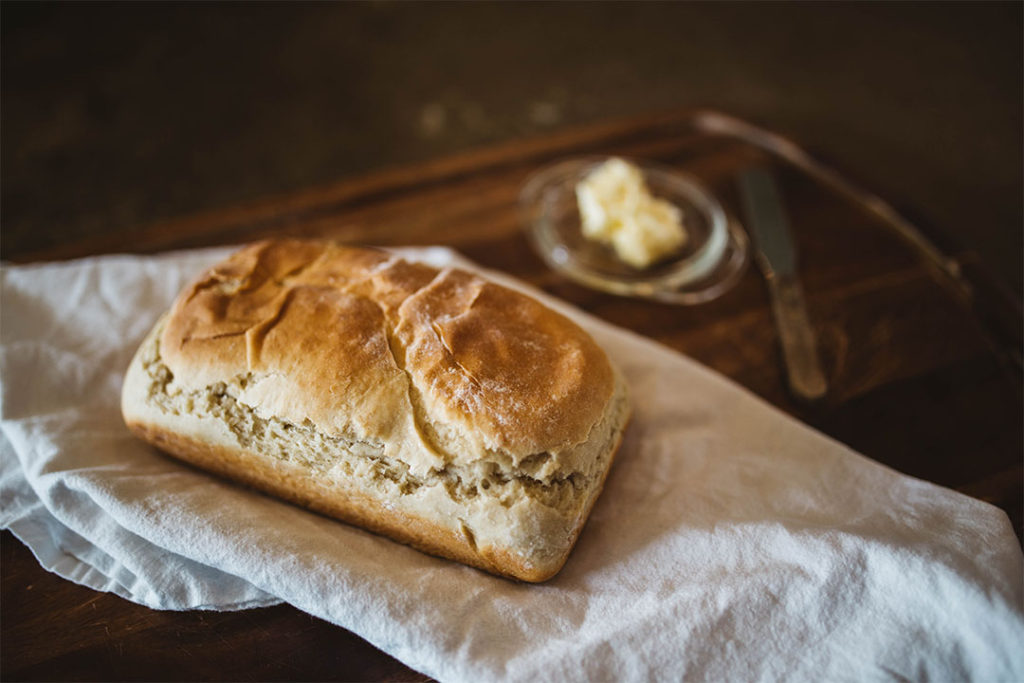Summer 2018
2
The Neglected Art
of Middles
Marjorie Sandor, RWW Faculty
The Neglected Art of Middles

Marjorie Sandor
RWW Faculty
The middle of a short story is like a middle child—we leave her alone until we need a scapegoat. So neglected is the middle that the first three people to whom I mentioned this topic said, “You mean the middle of a novel, right?” As if stories were too brief to have middles. On the other hand, the great Russian story writer and playwright Anton Chekhov only believed in middles: “My own experience,” he once wrote, “is that once a story has been written, one has to cross out the beginning and the end. It is there that we authors do most of our lying.”
In other words, for Chekhov, good stories are pure middle. But there still remains the troubling fact that even a story stripped down to its middle must have a middle. So one night, I set myself this little challenge (forgive me if it sounds like a nerdy Sunday-morning NPR puzzle).
Find two stories—one very long and one very short. Now find the exact middle of each story. What’s happening at that spot? Not the beginning of the middle or the end of the middle, but the deep-space, deep-gut, unremarked, unloved middle.
The mind works in mysterious ways, especially when one is sleeping. I awoke with a start at 3:00 a.m. with two stories on my mind: “Fat” by Raymond Carver and “The Dead” by James Joyce.
Maybe because it was the middle of the night, it took me a while to recognize that both stories are structured around a highly ritualized evening meal. In “Fat,” it is the serving of a three-course restaurant meal; the narrator, a waitress, is as attentive as an acolyte to her extraordinarily large customer, handing him his menu, reciting the litany of specials, serving the dishes in a precise order. And in the case of “The Dead,” James Joyce’s dinner dance is in early January, close to the time of an important Christian holiday: the Feast of the Epiphany, which celebrates the revelation of Christ’s divinity. Though “the Miss Morkans’” annual supper and dance is itself a secular affair, it brims with rituals that must be performed at certain moments, in a set order. Suffice it to say that by the end of these stories, you feel as if you’ve watched a sacred ritual dressed in profane clothing.
"Suffice it to say that by the end of these stories, you feel as if you’ve watched a sacred ritual dressed in profane clothing."
So, what did I discover in the absolute deep middles of these two stories, one of them only four pages long, and one just over fifty?
A silence. A stillness. A moment standing in sharp contrast to the oppressive march of social rituals, of human messiness and chatter. This “beat” of silence seems to provide space—both visual and rhythmic—for the story’s hinge, its first serious turn toward the end. In each case, the atmosphere of the physical space changes first—the two dining rooms themselves—as if in preparation for a brief, almost negligible action, which will, in turn, lay the ground for the story’s final revelation.
Think of this action as one small no buried in a flood of yesses. This singular minor note offers the first sounding of a recognition lying beyond—or within—all our social noise.
Let’s look first at “Fat,” by Raymond Carver. It begins, “I am sitting over coffee and cigarettes at my friend Rita’s and I am telling her about it. Here is what I tell her.” The story’s opening establishes a sort of double frame: in the outer frame, the narrator-waitress is telling us the story of telling her friend Rita about her encounter with “a fat man” seated at one of her tables “late of a slow Wednesday.”
He is “neat-appearing and well-dressed enough,” she tells us, but it is the fingers she remembers best: “long, thick, creamy fingers.” It’s those monumental fingers, along with the fact that he speaks “strangely” (entirely in the royal “we” while emitting little, puffy breaths), that heightens the encounter beyond the ordinary, beyond the “table of businessmen, very demanding.”
Over the course of the next few pages, the story of serving “the fat man” will take on a charged solemnity. We’ll hear not only what she told Rita, but also what happened during that telling. Its aftermath is crucial to the story’s final effect.
Before we get to the absolute strict middle, I need to tell you that the “larger middle” of the story is itself framed by a small physical gesture on the part of the enormous man: the lifting of his spoon. Just after he lifts his spoon the first time, the waitress herself, fielding cruel asides from the other waitstaff about “fatty,” speaks up for the first time: “He can’t help it, so shut up,” she says to another waiter. A few beats later, we have this:
My large parties are gone now and also the old couple. The place is emptying out. By the time I serve the fat man his chops and baked potato, along with more bread and butter, he is the only one left.
I drop lots of sour cream onto his potato. I sprinkle bacon and chives over his sour cream. I bring him more bread and butter.
That’s the exact middle. Notice that the crowd is gone, the place is emptying out. He is the only one left. It’s as if, for a moment, everyone is gone—not only the “large parties” (very demanding) but also the snarky waitstaff and her own boyfriend, Rudy, the cook. The noise of what I’ll call “the human marketplace” has shrunk. Then she says, “I know now I was after something. But I don’t know what.”
This brief moment of communion, followed by a near recognition, is sharply juxtaposed against a swift return to scene. Another waitress says, “How is old tub-of-guts doing? He’s going to run your legs off.”

After this, for a few more lines, these two rhetorical modes—the sacred exchange and the profane commentary—will duke it out, preparing us for the most intimate point in the restaurant encounter: a pair of confessions. As the narrator brings her customer the “Green Lantern Special” (a dessert), she recalls, “a feeling came over me. . . . Believe it or not, he says, I haven’t always been this way.” To which she replies, “Me, I eat and I eat and I can’t gain, I say. I’d like to gain, I say. No, he says. If we had our choice, no. But there is no choice. Then he picks up his spoon and eats.”
This repeated gesture of picking up his spoon—like the ringing of a bell to conclude a service—signals the end of the encounter. “What else, says Rita, lighting one of my cigarettes and pulling her chair closer to the table.” In her gestures, gluttony itself is redefined: the hunger for gossip and mockery are clearly the sin here. The narrator refuses to serve up the victim; she says to Rita, “That’s it. Nothing else.”
From that point on, the narrator’s resistance to conventional cruelty gains in strength, even as she goes home with Rudy and listens to his mocking comments. Alone in the shower for a moment, the narrator will rest her hand on her own “middle” and wonder “what would happen if I had children and one of them turned out to look like that.” It is a meditative moment heightened by the surrounding chatter of Rudy’s comments, as somber as an annunciation. I don’t think this moment would have the same force if not for the smaller, earlier beat of silence and solitude, the moment of the restaurant “emptying” out. And Rudy himself? By the time they get into bed and he “gets on her,” she feels “terrifically fat, so fat that Rudy is a tiny thing and hardly there at all.”
Before we get to the absolute strict middle, I need to tell you that the “larger middle” of the story is itself framed by a small physical gesture on the part of the enormous man: the lifting of his spoon. Just after he lifts his spoon the first time, the waitress herself, fielding cruel asides from the other waitstaff about “fatty,” speaks up for the first time: “He can’t help it, so shut up,” she says to another waiter. A few beats later, we have this:
My large parties are gone now and also the old couple. The place is emptying out. By the time I serve the fat man his chops and baked potato, along with more bread and butter, he is the only one left.
I drop lots of sour cream onto his potato. I sprinkle bacon and chives over his sour cream. I bring him more bread and butter.
That’s the exact middle. Notice that the crowd is gone, the place is emptying out. He is the only one left. It’s as if, for a moment, everyone is gone—not only the “large parties” (very demanding) but also the snarky waitstaff and her own boyfriend, Rudy, the cook. The noise of what I’ll call “the human marketplace” has shrunk. Then she says, “I know now I was after something. But I don’t know what.”

This brief moment of communion, followed by a near recognition, is sharply juxtaposed against a swift return to scene. Another waitress says, “How is old tub-of-guts doing? He’s going to run your legs off.”
After this, for a few more lines, these two rhetorical modes—the sacred exchange and the profane commentary—will duke it out, preparing us for the most intimate point in the restaurant encounter: a pair of confessions. As the narrator brings her customer the “Green Lantern Special” (a dessert), she recalls, “a feeling came over me. . . . Believe it or not, he says, I haven’t always been this way.” To which she replies, “Me, I eat and I eat and I can’t gain, I say. I’d like to gain, I say. No, he says. If we had our choice, no. But there is no choice. Then he picks up his spoon and eats.”
This repeated gesture of picking up his spoon—like the ringing of a bell to conclude a service—signals the end of the encounter. “What else, says Rita, lighting one of my cigarettes and pulling her chair closer to the table.” In her gestures, gluttony itself is redefined: the hunger for gossip and mockery are clearly the sin here. The narrator refuses to serve up the victim; she says to Rita, “That’s it. Nothing else.”
From that point on, the narrator’s resistance to conventional cruelty gains in strength, even as she goes home with Rudy and listens to his mocking comments. Alone in the shower for a moment, the narrator will rest her hand on her own “middle” and wonder “what would happen if I had children and one of them turned out to look like that.” It is a meditative moment heightened by the surrounding chatter of Rudy’s comments, as somber as an annunciation. I don’t think this moment would have the same force if not for the smaller, earlier beat of silence and solitude, the moment of the restaurant “emptying” out. And Rudy himself? By the time they get into bed and he “gets on her,” she feels “terrifically fat, so fat that Rudy is a tiny thing and hardly there at all.”
"I don’t think this moment would have the same force if not for the smaller, earlier beat of silence and solitude, the moment of the restaurant 'emptying' out."
At this point, Rita breaks in again: “that’s a funny story.” And here the story spills beyond its frame, its final abundance reserved for us—for Rita, like the “demanding businessmen,” the mocking waitstaff, or Rudy, cannot see the sacredness of the moment.
That’s a funny story, Rita says, but I can see she doesn’t know what to make of it.
I feel depressed. But I won’t go into it with her. I’ve already told her too much.
She sits there waiting, her dainty fingers poking her hair.
Waiting for what? I’d like to know.
It is August. My life is going to change. I feel it.
It’s been said that ritual meals in ancient society were meant not only to strengthen kinship bonds, but also to serve as “change-actions.” That the preparation for such a change should be buried deep in the middle of a meal—and a story—when we are least likely to notice it, is a touch subversive; we might miss it. But it doesn’t miss us.
Set in early twentieth-century Dublin, James Joyce’s “The Dead” nears novella length. Its focal character, Gabriel Conroy, is a “tall, stoutish young man” approaching early middle age. His social nerves are already strained as he enters his maiden aunts’ home, and his anxious pleasantries with “Lily, the caretaker’s daughter,” meet unexpected resistance. “I suppose we’ll be going to your wedding one of these fine days with your young man, eh?” he says, and Lily lets fly with a bit of rough truth: “The men that is now is all palaver and what they can get out of you.”
As it progresses, the story will feature an escalating series of such retorts, like small “knocks” on Gabriel’s thinning social armor. With each successive knock, he’s rendered a bit more vulnerable to the recognition that awaits him later that night, in the quiet hotel room to which he has repaired with his wife. But during the party scene itself, this vulnerability remains mostly buried under his own wish to “escape” into the snowy night—the very universe that will speak to him, at story’s end, in such a radically different way than he’d hoped.


Let us leap to the story’s middle. The festive table has been laid, and Gabriel must carve the “fat brown goose.” If the small silence of Carver’s story takes place in an “emptied out” dining room, in “The Dead” it takes place after a domestic feast. The table itself has been lavishly described, and that description, both comic and claustrophobic, carries the faint whiff of the battlefield and ritual sacrifice: there is a great ham “stripped of its outer skin . . . a neat frill around its shin”—this can only be our poor Gabriel. And “in the centre of the table there stood, as sentries to a fruit-stand . . . two squat old-fashioned decanters . . . on the closed square piano a pudding in a huge yellow dish lay in waiting and behind it were three squads of bottles of stout and ale and minerals . . .” He is virtually surrounded by the enemy.
We are nearing the middle of the meal, and the middle of the story. As he eats, Gabriel listens to a debate over great singers. His elderly Aunt Kate is quiet, too, “picking at a bone.” This brief, desolate silence, surrounded by the chatter of others, is the story’s secret hinge, its first full beat of silence, and it will be broken by Aunt Kate herself with sudden vehemence: “For me, said Aunt Kate . . . there was only one tenor. To please me, I mean. But I suppose none of you ever heard of him . . . His name . . . was Parkinson. I heard him when he was in his prime and I think he had then the purest tenor voice that was ever put into a man’s throat.”
No one knows what to do with this little outburst. There is a brief flurry of dialogue as if to “cover over” some awkwardness, then a sort of second covering through physical action: “Gabriel having finished, the huge pudding was transferred to the table” and “the clatter of forks and spoons began again.”
Let us leap to the story’s middle. The festive table has been laid, and Gabriel must carve the “fat brown goose.” If the small silence of Carver’s story takes place in an “emptied out” dining room, in “The Dead” it takes place after a domestic feast. The table itself has been lavishly described, and that description, both comic and claustrophobic, carries the faint whiff of the battlefield and ritual sacrifice: there is a great ham “stripped of its outer skin . . . a neat frill around its shin”—this can only be our poor Gabriel. And “in the centre of the table there stood, as sentries to a fruit-stand . . . two squat old-fashioned decanters . . . on the closed square piano a pudding in a huge yellow dish lay in waiting and behind it were three squads of bottles of stout and ale and minerals . . .” He is virtually surrounded by the enemy.
We are nearing the middle of the meal, and the middle of the story. As he eats, Gabriel listens to a debate over great singers. His elderly Aunt Kate is quiet, too, “picking at a bone.” This brief, desolate silence, surrounded by the chatter of others, is the story’s secret hinge, its first full beat of silence, and it will be broken by Aunt Kate herself with sudden vehemence: “For me, said Aunt Kate . . . there was only one tenor. To please me, I mean. But I suppose none of you ever heard of him . . . His name . . . was Parkinson. I heard him when he was in his prime and I think he had then the purest tenor voice that was ever put into a man’s throat.”
No one knows what to do with this little outburst. There is a brief flurry of dialogue as if to “cover over” some awkwardness, then a sort of second covering through physical action: “Gabriel having finished, the huge pudding was transferred to the table” and “the clatter of forks and spoons began again.”
"This brief, desolate silence, surrounded by the chatter of others, is the story’s secret hinge, its first full beat of silence . . ."
From this point on, the story will drive relentlessly forward. Gabriel, with the automatism of an acolyte driven by the pattern of the ritual, will rise and give a speech, and his desire to flee into the snowy night will grow ever stronger. The speech will be a success, but the scene ends ironically, with the drunk guest Freddy Malins conducting a song with his pudding fork.
Just as the second lifting of the spoon in “Fat” signaled a shift, a turn in the story, here, Freddy Malins’s pudding fork conducts us into the story’s final movement.
The next section begins, “the piercing morning air came into the hall,” and so begins the story’s final outward sweep. The snow’s spectral quality before this point held for Gabriel the possibility of escape; now it taps at the window, coming for him—for all of us—as surely as death will come. But before this, something else will happen, just as it does in Carver’s story: the crowd will diminish, person by person, while moments of solitude—and vulnerability—increase in number and intensity. This movement begins with Gabriel, at the very end of the party, watching his wife Gretta at the top of the stairs. Most of the party guests have gone, and she stands there as the professional tenor, Mr. Bartell D’Arcy, sings an old ballad, “The Lass of Aughrim.”
Gretta’s mysterious attitude of listening fills Gabriel with desire. But Gretta, like old Aunt Kate, is thinking of someone else, and that story will burst from her soon enough, in the featureless and silent hotel room of the story’s end: she is remembering Michael Furey, a delicate boy she knew long ago who used to sing that song and who likely died for love of her. Here at last is the story’s ghost, the shade of mortality that has been approaching Gabriel from the moment he stepped into his aunts’ house.
Think back to the small silence in the meal’s middle, when old Aunt Kate picked at a bone, then raised from the dead a lost singer whose name had been forgotten by most and who had, for her, “the purest tenor voice that was ever put into a man’s throat.”
Whether in stark brevity or lyric swoon, both “The Dead” and “Fat” move from highly ritualized social beginnings to endings of uncommon silence. Both these final solitudes appear to burst directly out of a long buildup of social confinement. But in fact, their force was planted deep in the negligible middle. It was the writer’s art to make us miss it.
Chekhov, Anton, quoted in Writing Short Stories: The Most Practical Guide by William H. Phillips, Syracuse University Press, 2002.
Carver, Raymond. “Fat,” from Where I’m Calling From: New and Selected Stories, Atlantic Monthly Press, 1988.
Joyce, James. “The Dead,” from Dubliners, in The Portable James Joyce, Penguin Books, 1976.
Marjorie Sandor is the author of four books of short fiction and essays, including the story collection Portrait of my Mother, Who Posed Nude in Wartime, winner of a 2004 National Jewish Book Award. Her work has appeared in such journals as AGNI, The Georgia Review, and The Harvard Review and has been anthologized in The Best American Short Stories and The Pushcart Prize. Her edited international short-story anthology, The Uncanny Reader, appeared in 2015. She teaches in the MFA Program at Oregon State University and the Rainier Writing Workshop.
